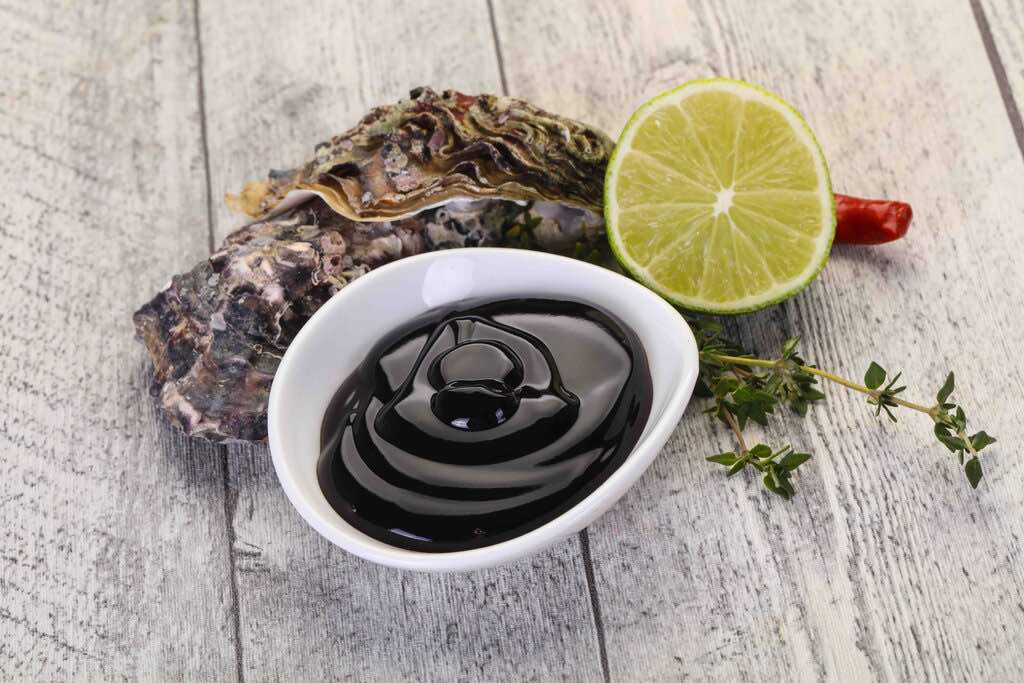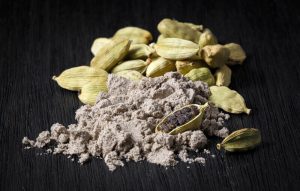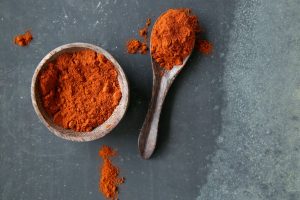
Oyster sauce is a dark and thick sauce made from oyster extracts that taste like a crossover between soy sauce and barbecue sauce. Just like soy sauce, it is frequently used as a staple condiment in Chinese cuisine, especially stir-fries. It’s mostly used to add a sweet, yet savory and umami flavor to meat and vegetable dishes like beef with broccoli stir fry and noodles such as chow mein. If you love stir-fries and do not have oyster sauce on hand, there are oyster sauce substitute options that you can use. Some might already be in your pantry!
Read the list below to learn some replacements for oyster sauce, how to use them, and what recipes suit each of them.
Best Oyster Sauce Substitutes

What can I substitute for oyster sauce? How do I know it is a good substitute? Generally, a good substitute captures the taste and consistency of oyster sauce as accurately as possible – dark brown color, has a strong umami flavor, and a think consistency. That is why in this carefully curated list, we have picked out 12 condiments that make the best oyster sauce substitutes.
Hoisin Sauce
Hoisin shares many similarities to oyster sauce, both in flavor and in use. These two sauces are so similar it is possible to confuse one for the other. Like the oyster sauce, hoisin (also called Chinese barbecue sauce) has a dark and thick consistency and is frequently used in Chinese and Vietnamese cuisine. We often see this sauce in meat and vegetable stir-fries, as marinades for spareribs, and even as dipping sauces for egg rolls.
This condiment also has its signature umami flavor with a subtle touch of sweetness that complements barbecue recipes well. However, it has a slightly tangy flavor that lacks the original ingredient. To balance the tangy flavor, mix ½ tablespoon hoisin and ½ tablespoon soy sauce and incorporate in a 1:1 oyster sauce to hoisin ratio. If you’re using this substitute on its own, use it exactly as the recipe suggests.
Teriyaki Sauce
Made with sugar (sometimes honey), soy sauce, and mirin, teriyaki sauce has a sweeter taste and less complex flavor than oyster sauce. Considering its slightly thick consistency and umami flavor, teriyaki works well in place of oyster sauce for dishes with sweet-savory palates like noodles and stir-fries. Additionally, it’s commonly used as a marinade or glaze for meat dishes like teriyaki chicken. This replacement is often available in most Asian groceries. But if you don’t have one near you, you can make your own with the ingredients mentioned above.
If a recipe needs one tablespoon of oyster sauce, replace it with two tablespoons of teriyaki sauce. If you have it, you can even mix it with one teaspoon of canned oysters broth to bring it closer to the original ingredient’s flavor.
Soy Sauce
Soy sauce is another commonly used condiment that makes a great substitute for oyster sauce. After all, it’s a pantry staple that packs a lot of umami flavor just like the original ingredient. The downside is that it has a thinner consistency and is slightly saltier than oyster sauce. For that reason, it’s best to cut the amount in half when using it as a substitute. You can also try mixing it with sugar to sweeten it a bit.
Another characteristic that adds to the overall allure of the soy sauce is that it’s vegan-friendly. Used as a flavor enhancer and for dipping, it’s thanks to this condiment that most vegetarian and vegan dishes have rich and well-packed flavors.
Fish Sauce
Fish sauce is made of seafood such as dried or raw fish, shellfish, shrimp, krill, or crab. Generally, they have a very salty and savory flavor with a thin and watery consistency. Meanwhile, oyster sauce is made, well, with oysters that are simmered until it’s caramelized into a thick consistency.
Even though both are made with seafood, they don’t exactly share the same taste because fish sauce is much saltier. With a few modifications, it’s a great oyster sauce replacement because of its strong savory taste. However, if you’re looking for a replacement that mimics the consistency as well, you will have better luck with the other options on this list. To use this replacement, just add a few drops of fish sauce. You may also adjust and add other ingredients to make up for the lack of sweet flavor.
Tamari
Tamari is a type of Japanese soy sauce more popular in Asian cuisine. Just like soy sauce, tamari is also made of soybeans and packs quite a lot of umami flavor. But this Japanese condiment is gluten-free and less salty and has a more pronounced umami taste. It also has a slightly thicker texture than the regular sort. Its deep umami flavor is a perfect flavor enhancer for stir-fries, dumplings, soups, noodles, and marinades. You can even dip your dumpling in it thanks to its less salty taste.
While it lacks the thick consistency of the oyster sauce, it works basically the same way as the original ingredient and regular soy sauce. An effective oyster sauce to tamari ratio is 1:1 in any recipe.
READ ALSO: Ultimate Guide to Types of Ramen
Vegan Oyster Sauce
As with most foods, vegan options are always available. Even in sauces! In place of oysters, vegan oyster sauce is made with mushrooms. In spite of that, this vegan option retains the same rich umami flavor, thick consistency, and dark brown color.
Because of their similarities, you’ll have no problem using it the same way as the regular oyster sauce. Use it for fried rice, beef and broccoli, and marinades. Fortunately, this one’s easy to spot at a grocery store. But if they don’t have it, scour your favorite Asian supermarket. To incorporate in your dishes, use exactly as the recipe suggests for oyster sauce.
Mushroom Sauces (Broth, Stir-fry Sauce)
Another vegetarian-friendly oyster sauce substitute is mushroom sauce. With soybeans as the main ingredient, this condiment also has mushroom flavoring, caramel coloring, preservatives, and salt and sugar for a well-balanced savory flavor. Overall, it has the signature umami taste and earthy flavor that’s commonly linked to Asian dishes.
Now, this option has two varieties: broth and stir-fry sauce. The broth, with its thin consistency, works better for soups. Meanwhile, the sauce, with its more concentrated umami flavor, suits stir-fry and noodle dishes better. Both broth and sauce alternatives can be used in a 1:1 mushroom sauce to oyster ratio.
Worcestershire sauce + Soy Sauce + Sugar
Worcestershire is similar to oyster sauce in flavor and appearance. It is salty and slightly sweet with the same dark and thick consistency. What’s also good about this substitute is that it’s more commonly used in Western foods like meat stews, pies, and casseroles. So, there’s a high chance that you already have it in your pantry.
However, Worcestershire has a hint of tang as it contains tamarind and vinegar. To make it a more suitable substitute, we recommend mixing equal parts of Worcestershire and soy sauce, then adding one to two teaspoons of sugar to offset the sour taste.
Black Bean Paste
Black bean paste is another substitute that you should add to the list! Because it is fermented, this condiment has a rich and savory taste. Generally, black bean paste has a slightly sweet yet sharp and pungent flavor. For that reason, mix one tablespoon of black bean paste with one tablespoon of sugar and a drizzle of mushroom broth. This mixture would help to resemble the flavor profile of oyster sauce. Then, use this mixture as a 1:1 replacement in any noodle, vegetable, meat, and even stew and soup recipes.
Coconut Aminos
If you are looking for a healthier alternative to oyster sauce, then you should give coconut aminos a try. It is soy-free, keto-friendly, and vegan. And the best part? This replacement is also non-GMO and MSG-free. But what are coconut aminos? Coconut aminos is a two-ingredient condiment made from fermented coconut sap and sea salt, making it naturally vegan and gluten-free. All in all, coconut aminos have an umami flavor and consistency that’s quite similar to soy sauce and a unique rich taste of its own.
Coconut aminos have a strong umami taste that works well as an oyster sauce alternative, particularly for dishes such as fried rice, stews, stir-fries, soups, and stews. You can also use it for dipping your wontons and sushis. Bear in mind that the unique flavor of coconut aminos might take some getting used to. So, do give it a taste first before adding it to your dish. We recommend incorporating it in a 1:1 coconut aminos to oyster sauce ratio.
Kecap Manis (Sweet Soy Sauce)
More salty than sweet with a consistency that resembles maple syrup, kecap manis has all the qualities you’re looking for in an effective substitute. But what is it? Kecap manis is a condiment commonly used in Indonesian cuisine. It is made with palm sugar and soy sauce made complex with the addition of aromatic spices such as lemongrass, makrut lime leaves, star anise, and more.
Like the original ingredient, this condiment is used to make marinades and flavor vegetables and different cuts of steak. With plenty of sweetness and umami flavor, kecap manis is a great oyster sauce substitute. If you’re in desperate need of a replacement, add ½ tablespoon of kecap manis for every 1 tablespoon of oyster sauce.
Homemade Oyster Sauce
Of course, the real deal is always the best option. Just because you often see oyster sauce in mass-produced bottles doesn’t mean you can’t make it at home. It might take some work, but you can make your own and ultimately have more stock that’s much more health-friendly.
How to Make Homemade Oyster Sauce
Making the extra effort to make your own condiments will pay off once you try the results. If you have extra time on your hands, make your own oyster sauce and finally rid your bottle of preservative-infused oyster sauce.
Ingredients:
- 3 oz canned oyster with liquid
- 1 tbsp water
- ¼ tsp salt
- 2 tbsp soy sauce or tamari
- ½ to 1 tsp sugar, to taste
Directions:
- Drain oysters. Reserve the liquid for later.
- Chop oysters. Transfer to a saucepan and add 1 tablespoon of water.
- On medium heat, saute for 10 minutes. Stir constantly.
- Turn off the stove. Add ¼ teaspoon of salt.
- Let it cool and strain the liquid in a bowl. Pour 2 tablespoons of soy sauce per ½ cup of the remaining liquid.
- Transfer back to the saucepan and boil. Once boiling, reduce heat and simmer for 10 minutes or once the mixture starts to thicken. You’ll know it’s thick enough when it clings to your spoon.
- Turn off the heat and add ½ teaspoon sugar. Let cool, store in an airtight container, then use in recipes.
Use These Oyster Sauce Substitutes to Add an Umami Flavor to Your Dishes
Oyster sauce is a flavor powerhouse and a versatile condiment used in many Chinese recipes. While we recommend all home cooks to have this condiment in the pantry, these oyster sauce replacements work just as well. The best practice is to start with minimal amounts and then add more to taste. Different replacements work better for different people, so it’s all about getting into the kitchen and experimenting to see which one best suits your palette.











